The restoration of the Holy Face, the monumental polychrome wooden crucifix that has been kept in Lucca Cathedral for more than a millennium, has been completed. The work restored the sculpture to the appearance it had from the 9th to the 17th century, revealing the precious polychromy hidden beneath a dark repainting and leading to the discovery of new information about the original construction techniques and materials.
Considered one of the three oldest wooden crucifixes in the West, the Holy Face of Lucca is the best preserved. All the results of diagnostic investigations, carried out on the work, agree in dating it to the 9th century. The restoration, entirely financed by the Fondazione Cassa di Risparmio di Lucca, was promoted by the Ente Chiesa Cattedrale di San Martino and directed by the Opificio delle Pietre Dure of Florence under the high supervision of the Soprintendenza Archeologia Belle Arti e Paesaggio for the Provinces of Lucca Massa Carrara and Pistoia.
From September 13, 2025, the month in which Lucca traditionally celebrates the Holy Cross, the crucifix will be visible to the public, for the first time after the restoration, inside the Cathedral, in the same building site where the intervention took place. Here it will remain until summer 2026, before being relocated to Matteo Civitali’s marble temple, itself under restoration after the discovery of ancient frescoes inside. The restitution ceremony, with prayer and blessing by Archbishop of Lucca Paolo Giulietti, will be held on Sept. 13 at 10 a.m.
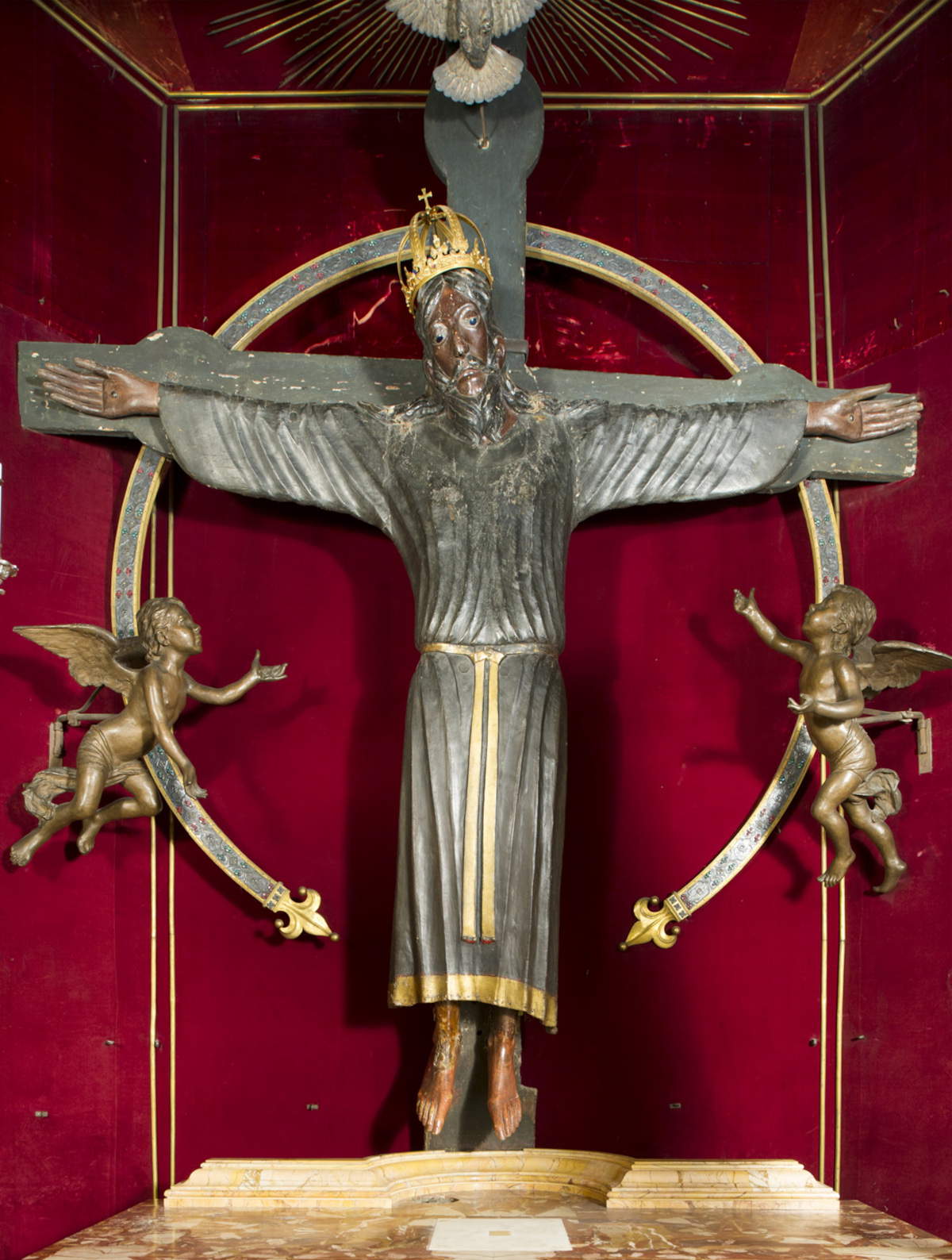
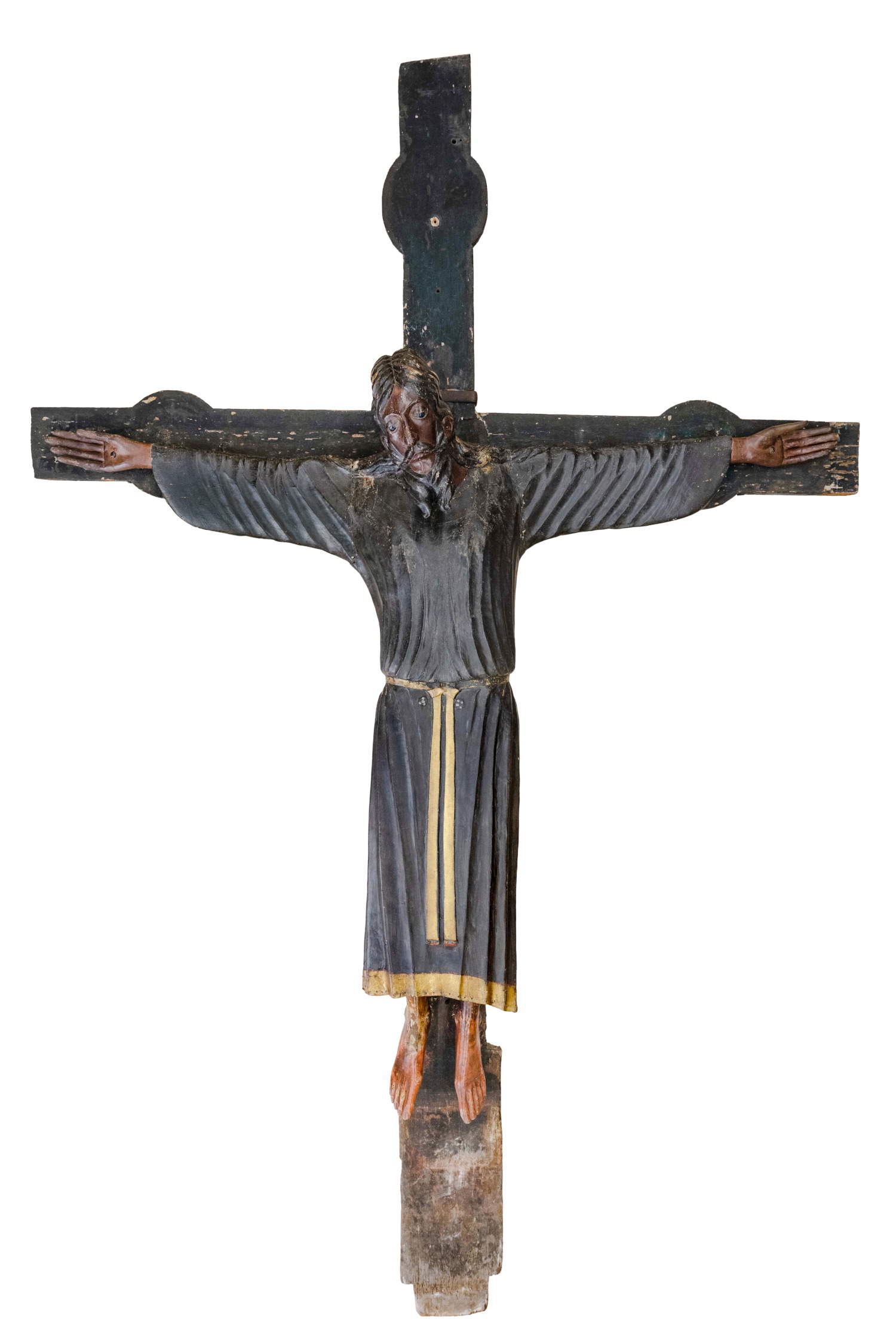
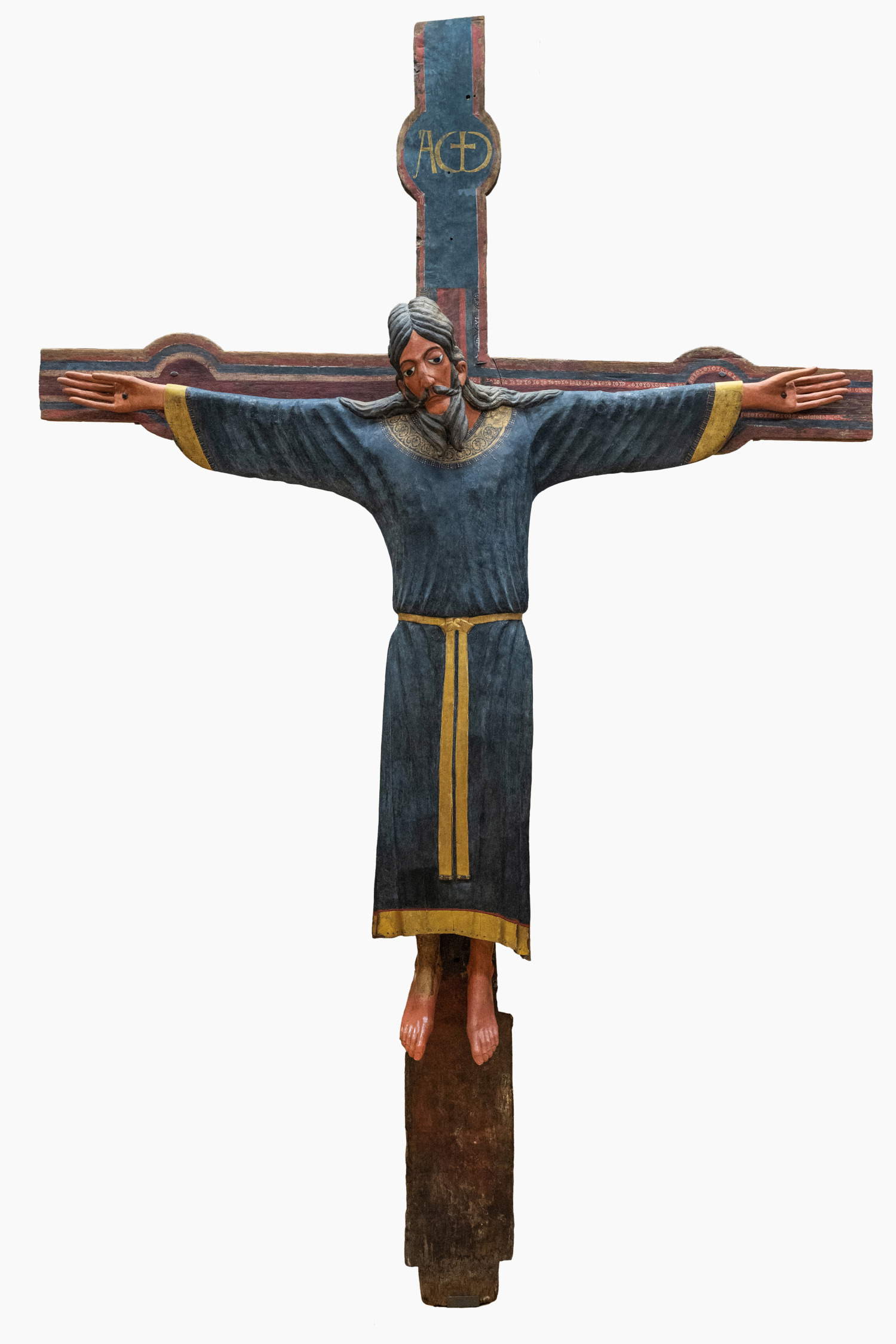
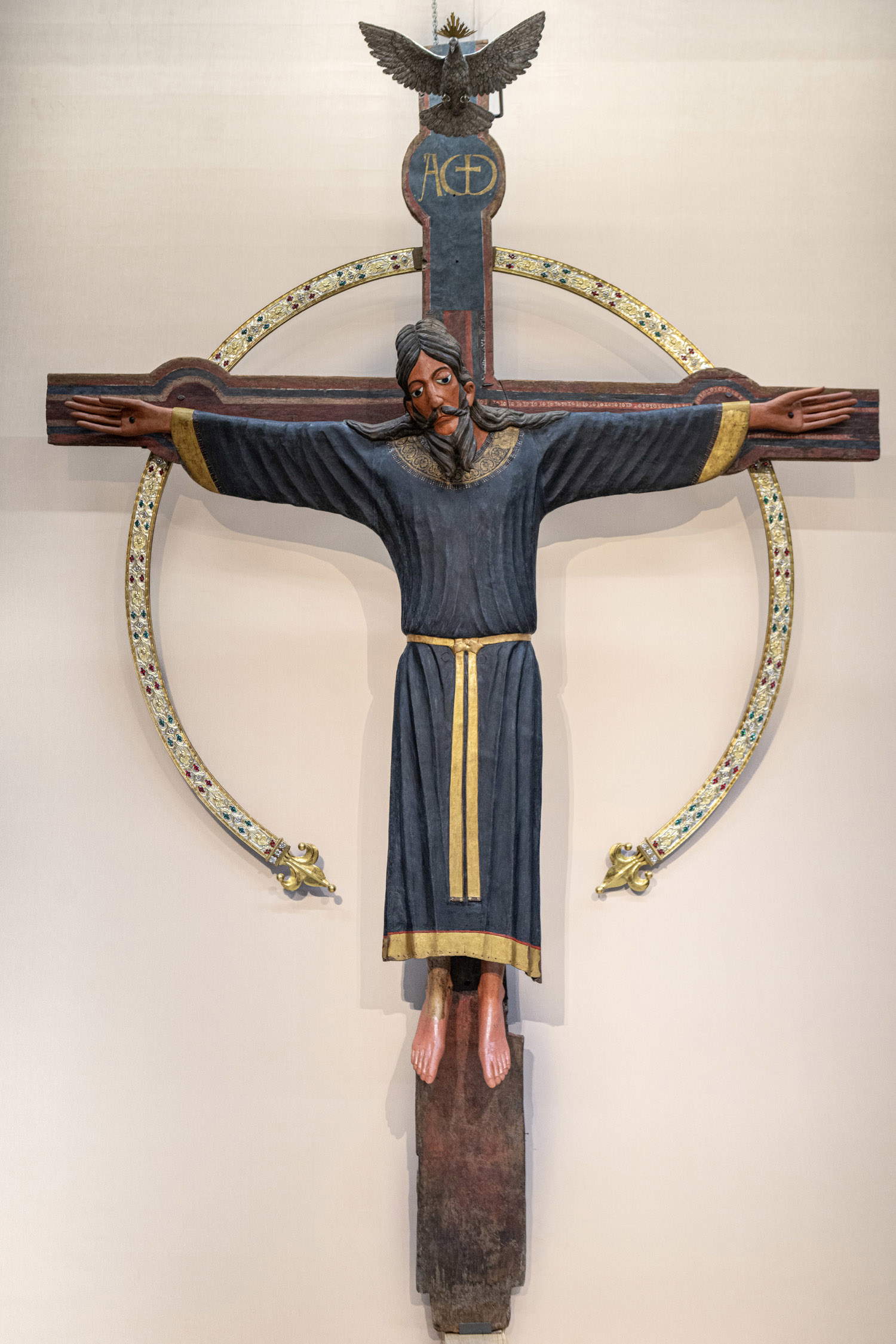
The restoration operations, which lasted more than three years, included a cognitive phase with diagnostic analysis (2022-2023) followed by the actual restoration (2023-2025), directed by the Polychrome Wooden Sculpture Restoration Sector of the Opificio delle Pietre Dure and carried out by Francesca Spagnoli.
Among the most delicate interventions were the separation of Christ from the cross to allow work to be done also on the internal parts of the work and the removal of the pigmented wax surface layer and the underlying repainting, , black on the robe and brick-colored on the flesh tones, that covered the Holy Face (250 cm high by 270 cm wide and 40 cm deep) and the cross (442 x 286 cm).
Under a dark surface coloration, spread over the sculpture and the cross since the 17th century, unevenly in the different parts, the flesh tones of Christ’s face, hands and feet; the gold leaf decorations of the edge of the sleeves and the hem of the robe; the refined one of the choker (possibly 15th-century); and the yellow-brown coloration of the hair and beard have become visible again. The robe is now dark blue, a layering consisting of lapis lazuli of the highest quality and in good condition. Below this, traces of two additional layers of the same color were found. The stratigraphic samples show how over time the blue color and the gilding of the robe were repeated. On the cross of the Holy Face, as old as the Christ, also subject to repainting over time, a precious “alpha and omega” in gold leaf on a blue background was recovered, as well as evidence of the existence of at least two earlier polychromes in shades of red and blue, enriched with decorative motifs in bands and palmettes.
Particularly exciting was the rediscovery of the glass paste eyes of the Holy Face, made by recasting glass from the Roman period: it is the only wooden sculpture of the period, still extant, with glass paste eyes. While the deep blue pupils were already visible, the white sclera was covered by a nineteenth-century zinc white paint, which has been removed. On the left eye, the sclera had a gap, which was intervened on with a resin integration. The intervention made it possible to restore to the gaze of the Holy Face its profound expressiveness.
The large nimbus (the dating of which is still being studied) surrounding the Holy Face (about 240 centimeters in diameter) in the shape of a semicircle was also covered with a thick layer of dark color, identified as an altered vegetable gum. It can now be admired: on a wooden support are 14 embossed and chiseled silver plates with cherubs, within golden relief ribs, set with 384 very intense emerald green and ruby red glass paste gems, at the center of which is a four-petaled silver flower. Attached to the lower ends are two gilded copper foil lilies.
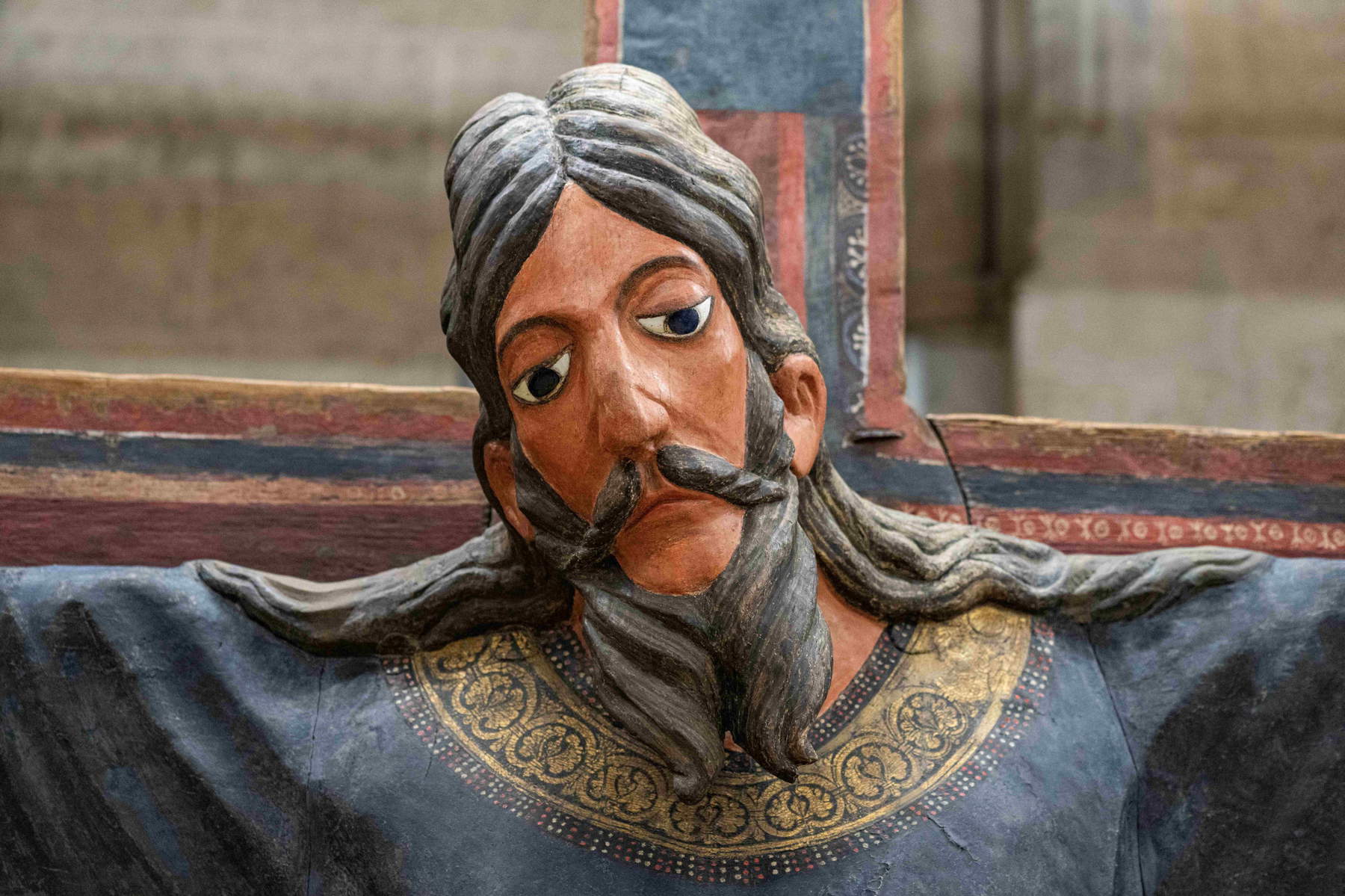
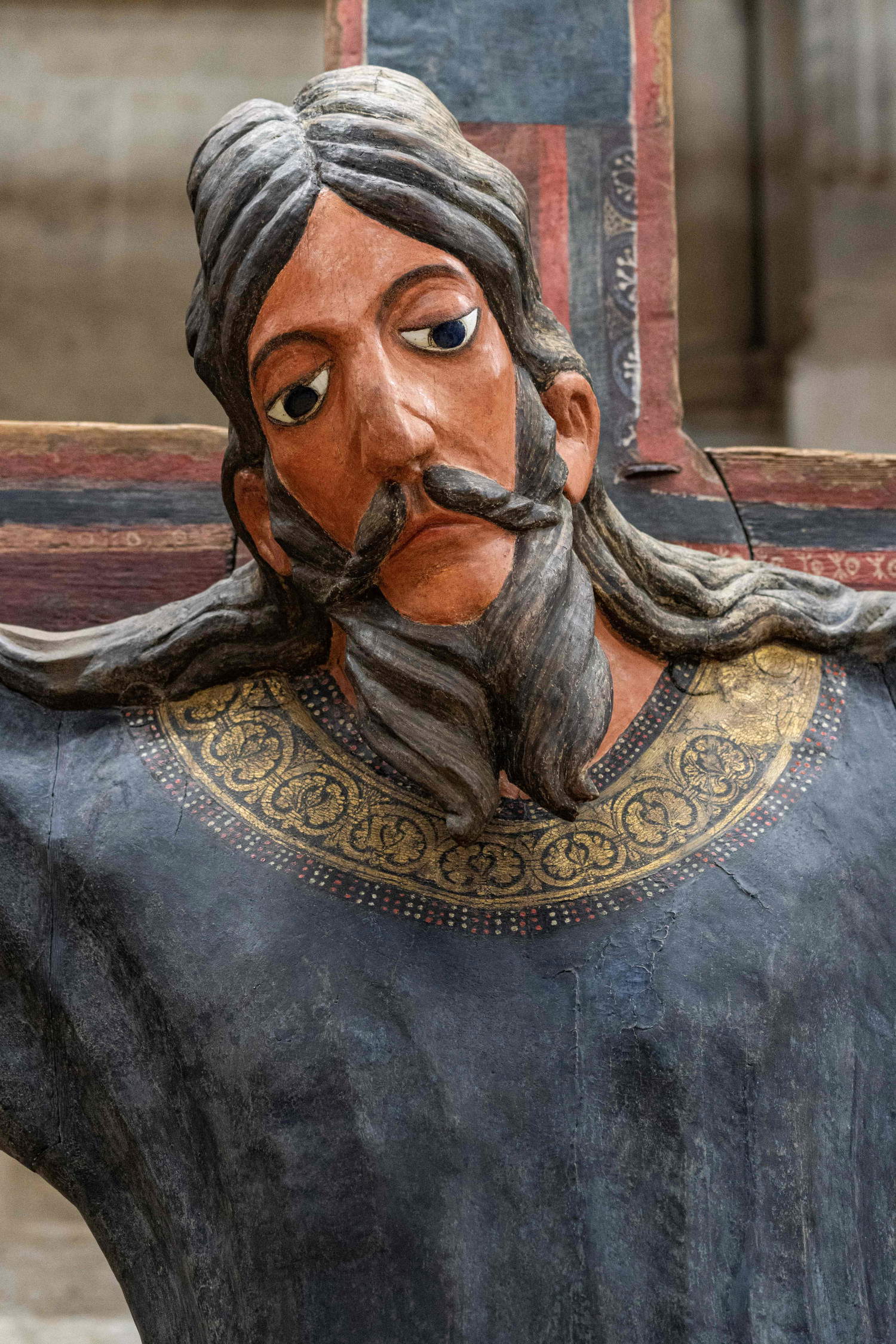
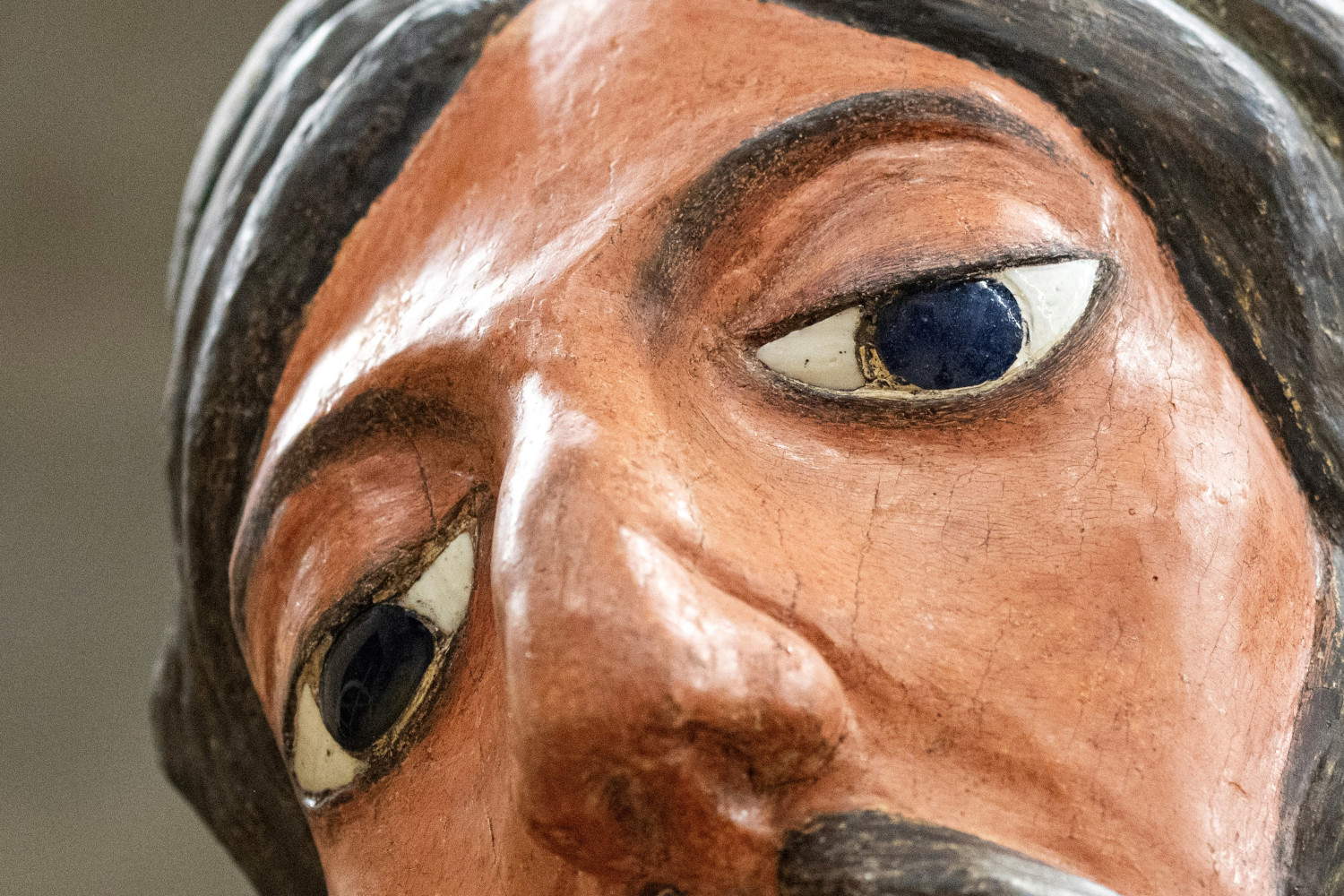
The separation of Christ from the cross, found to be coeval, accomplished without destructive actions, made it possible to discover the construction technique and the wood species of which the sculpture is made. In addition, it was possible to learn about the original anchoring system, consisting of six oak and cedar wood pins, and to design the metal reinforcing structure. The Holy Face-including the head and legs-is carved from a single log of walnut wood. The head, much protruding from the body, is carved from the part of the trunk toward the root of the tree; the legs correspond to the part facing the foliage. The Christ is hollowed out at the back along its entire length, as was the norm for wooden sculptures by reducing its thickness and thus mitigating the damaging expansion of the wood, and the nape of the neck is closed by a wooden lid, formerly covered with red fabric, where relics were probably placed. The cross was made using two different wood species: the vertical arm is made of chestnut wood, while the horizontal arm is made of white spruce.
In 2020, for the celebration of the 950th anniversary of the refounding of Lucca’s cathedral, three samples of the walnut wood, in which the carved the Holy Face, and a fragment of canvas were subjected for the first time, by the National Institute of Nuclear Physics in Florence (INFN), to investigations with Carbon 14 and had resulted in a dating between the late 8th and late 9th centuries (until then the Holy Face was believed by scholars to be a 12th-century work, a replica of an older original that had been lost). Now, during the recently completed restoration, the results of diagnostic analyses all converge in dating it to the 9th century. In particular, dendrochronological investigations, carried out by the IBE-CNR Laboratory in Florence, on the wood of the cross coeval with the Christ, have been able to attest with precision a date to 860 with a chronological margin of deviation just beyond that.
“It is a date that also finds confirmation in the typology of the Holy Face,” explains Anna Maria Giusti, art historical consultant for the museum and archaeological complex of the Cathedral of Lucca and for the restoration of the Holy Face, “which has stringent affinities with the Crucifix of the Cathedral of Sansepolcro, also assigned to the 9th century by investigations with Carbon 14. Similar dating has been diagnosed for a Crucifix preserved in Belgium at Tancrémont and coming from an abbey of Carolingian foundation. Crucifixes of this type, lost but recorded in documents, were concentrated in large numbers in the territories of Charlemagne’s Empire, of which Lucca was also part from 774, and it cannot be ruled out that the provenance of the Holy Face can be hypothesized from that Carolingian sphere, which was the epicenter of an extraordinary artistic flowering.”
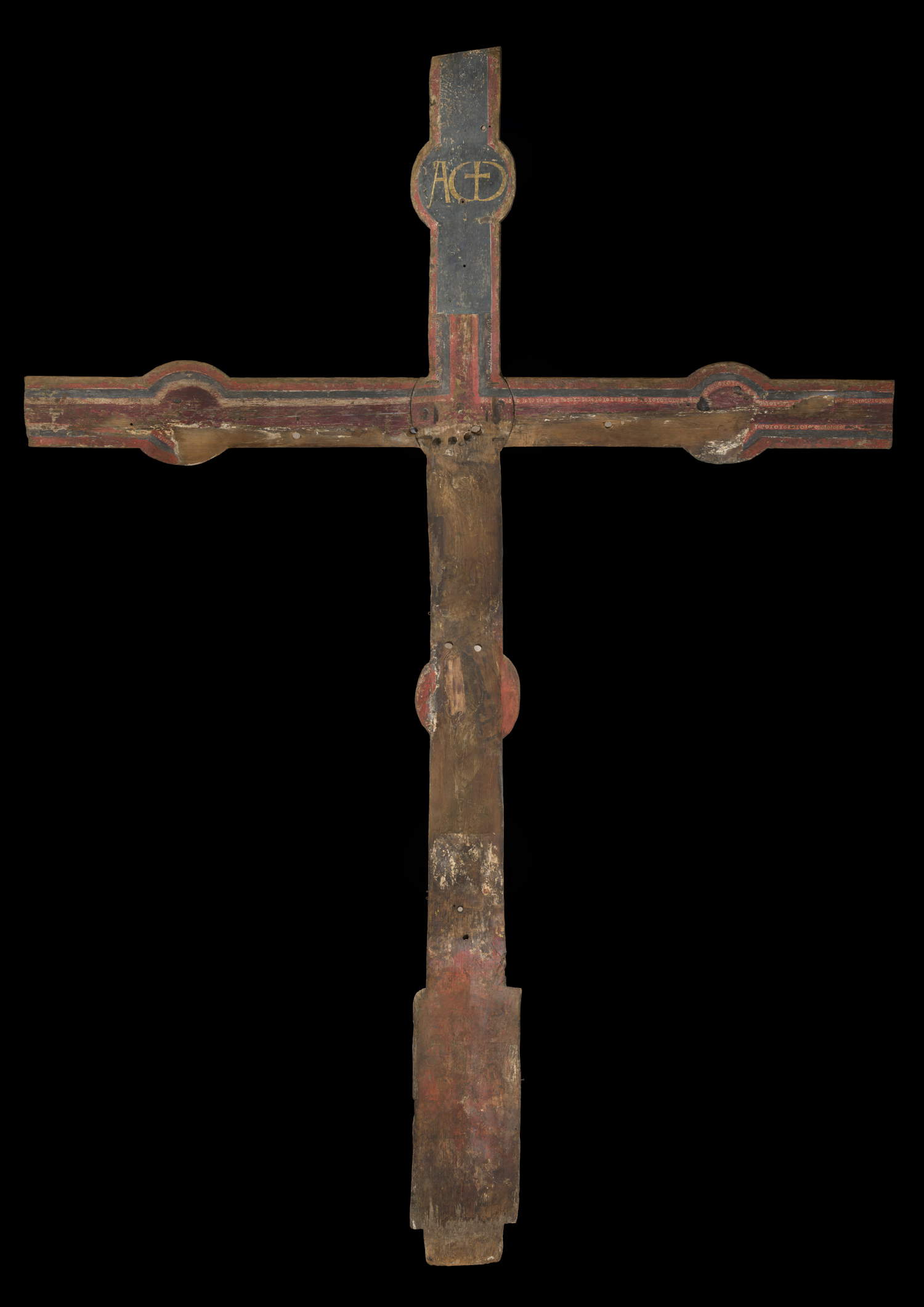
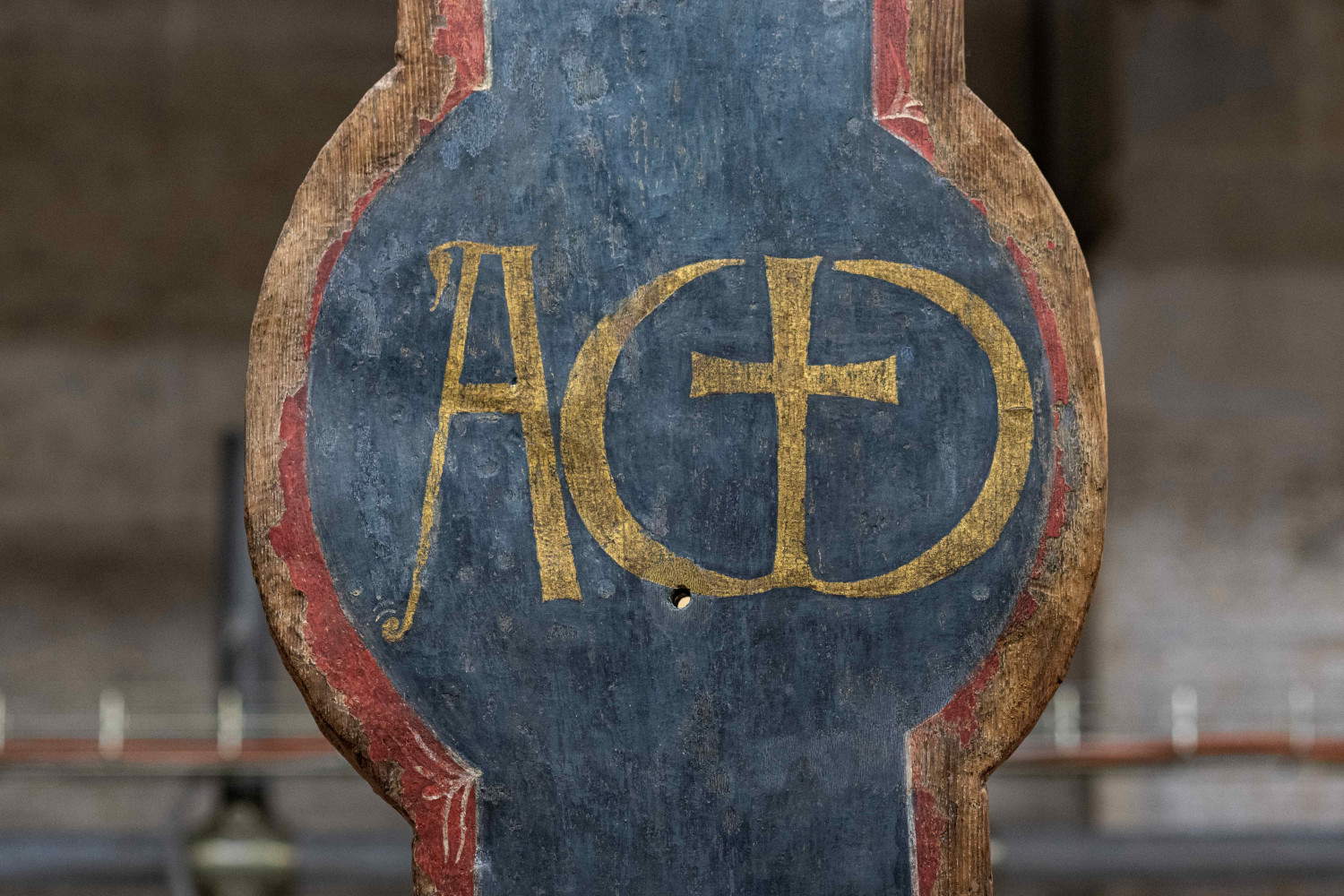
“There are several reasons why the restoration of the Holy Face can be called an event for the Church of Lucca,” said H.E.R. Msgr. Paolo Giulietti, Archbishop of Lucca. “The most striking one is undoubtedly the return of the image to its original appearance, quite different from the one to which the people of Lucca had been accustomed for some centuries now. The operation, in addition to its undoubted philological value, leads to strengthening the symbolic values of the sacred image, linked to the model of Christus triumphans, the Crucified victorious over evil and death. The colors of the robe, the incarnate and the cross itself, in fact, freed from the patina of black austerity deposited by time and men, return to proclaim what the Risen One affirms in the dialogue with the disciples on their way to Emmaus: ”Was it not necessary that Christ should suffer these things in order to enter into his glory?“ (Lk. 24:26). It is a reading of the torment of the cross in the light of the Church’s Paschal faith, which is presented to us again in all its power and beauty.”
“Our goal,” said Msgr. Marco Gragnani, rector of the Ente Chiesa Cattedrale di Lucca, “was to combine the need for scientific research with respect for the cultic and religious importance that the Holy Face has held for centuries within the Cathedral. The restoration has restored to the Crucifix its original chromatic and material vitality, allowing a fuller reading of its theological meaning: in the iconography of Christ Triumphant, the Cross-from an instrument of death-is transformed, through the Resurrection, into the Throne of Grace. Even the nimbus, a lily semicircle that has regained the splendor of the precious material previously concealed by a dark varnish, contributes to reinforcing the theological message, making visible the splendor of the light surrounding the Triumphant Christ.”
“The long-standing commitment of the Fondazione Cassa di Risparmio di Lucca to this restoration,” commented President Massimo Marsili, “is based on the significance of the Holy Face as a recognized symbol of its deep and inseparable bond with Lucca and its territory. The intervention represents not only an action of conservation and protection, but the custody and confirmation of the rootedness of the Lucchese community in the universal Christic values: identity as an expression of solidarity, fraternity, welcome, understanding of otherness and hope. The commitment on the territory of the Fondazione Cassa di Risparmio di Lucca is substantiated in widespread support for those who work for the values of inclusion and social cohesion by combating old and new poverty and in accompanying the activities of the entities working in this direction. This is a convinced choice and it is no coincidence that the effigy of the Holy Face is historically also our symbol.”
“We were all fortunate participants in an exceptional event,” explained Angela Acordon, Soprintendente Archeologia Belle Arti e Paesaggio for the provinces of Lucca, Massa Carrara and Pistoia, “which transformed a critical situation into a unique and unrepeatable opportunity because this restoration, desired by so many Subjects who worked in perfect harmony, gives back a renewed, but not disrupted, image of the ”Holy Face“ and delivers it to the faithful, for the repetition of an ancient and yet always current devotion, and to scholars of art and history for new reflections.”
“The restoration of the Holy Face was necessary. Dealing with a work that combines in itself the undoubted historical artistic value and the equally undoubted religious and devotional value makes the path even more complex and obliges one to exercise judicious discernment on the occasion of each individual choice. This is what was done in this case, constantly directing the investigations and then putting the results to good use by interweaving them with the historical and material data that flowed from the work,” explained Emanuela Daffra, Superintendent of the Opificio delle Pietre Dure. “Now, thanks to the work of a cohesive group of excellent professionals, we are returning a sculpture that is not only powerful and impressive but able to safely continue its thousand-year history, accompanied by a wealth of data that will provide further opportunities for study.”
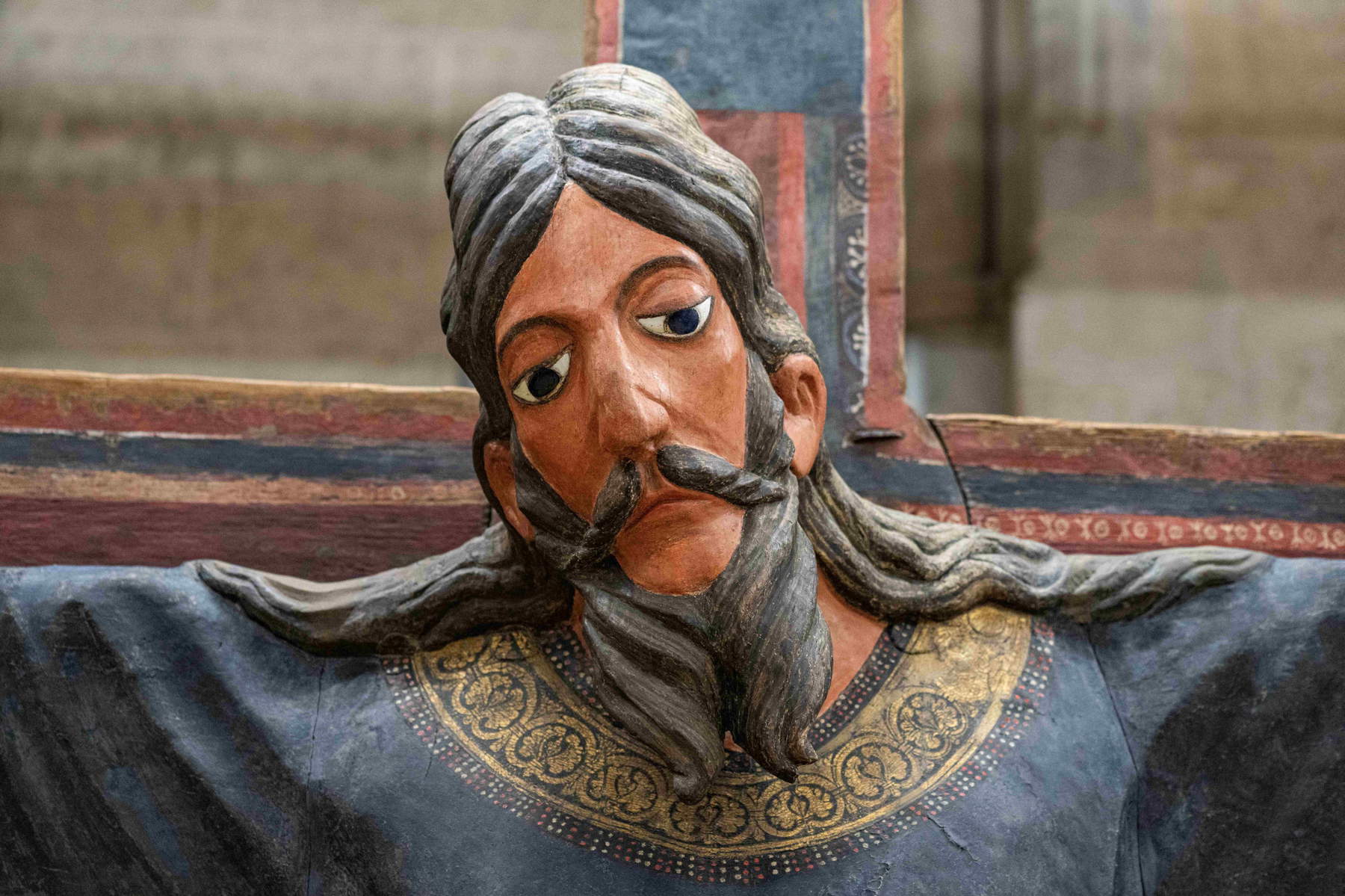 |
| Lucca's Holy Face restored: now looks as it did from the 9th to the 17th century |
Warning: the translation into English of the original Italian article was created using automatic tools. We undertake to review all articles, but we do not guarantee the total absence of inaccuracies in the translation due to the program. You can find the original by clicking on the ITA button. If you find any mistake,please contact us.